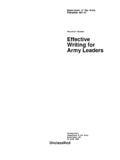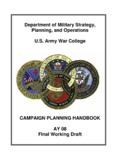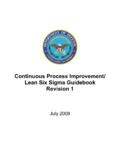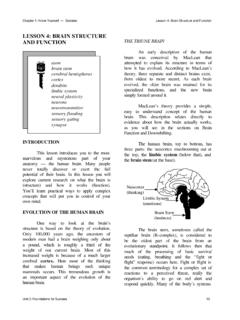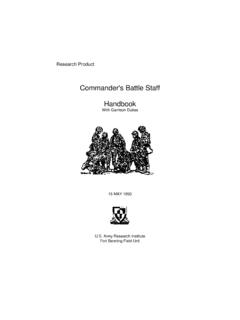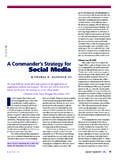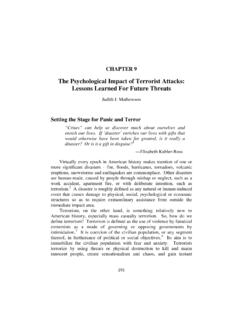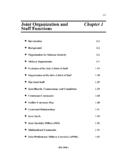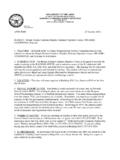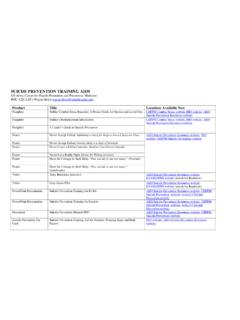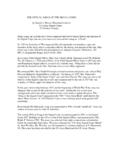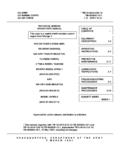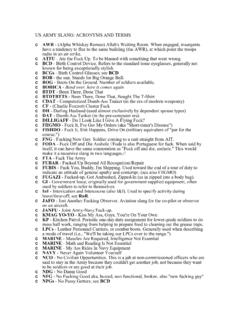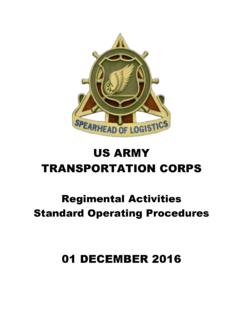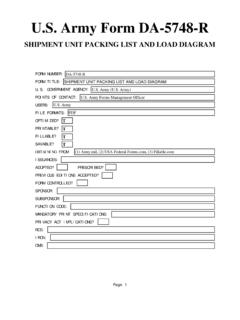Transcription of FIRST AID - Air University
1 FM (FM 21-11). NTRP AFMAN 44-163(I). FIRST AID. HEADQUARTERS, DEPARTMENTS OF. THE army , THE NAVY, AND THE AIR FORCE. DECEMBER 2002. DISTRIBUTION RESTRICTION: Approved for public release;. distribution is unlimited. *FIELD MANUAL HEADQUARTERS. NO. DEPARTMENT OF THE army , NAVY TACTICAL THE NAVY, AND THE AIR FORCE. REFERENCE Washington, DC, 23 December 2002. PUBLICATION. NO. AIR FORCE MANUAL. NO. 44-163(I). FIRST AID. TABLE OF CONTENTS. Page PREFACE .. v CHAPTER 1. FUNDAMENTAL CRITERIA FOR FIRST AID. 1-1. General .. 1-1. 1-2. Terminology .. 1-2. 1-3. Understanding Vital Body Functions for FIRST 1-3. 1-4. Adverse 1-7. 1-5. Basics of FIRST Aid .. 1-7. 1-6. Evaluating a Casualty .. 1-8. CHAPTER 2. BASIC MEASURES FOR FIRST AID. 2-1. General .. 2-1. Section I. Open the Airway and Restore 2-1. 2-2. Breathing Process .. 2-1. 2-3. Assessment of and Positioning the Casualty .. 2-1. 2-4. Opening the Airway of an Unconscious or not Breathing Casualty.
2 2-3. 2-5. Rescue Breathing (Artificial Respiration).. 2-6. 2-6. Preliminary Steps All Rescue Breathing 2-6. 2-7. Mouth-to-Mouth Method .. 2-7. 2-8. Mouth-to-Nose Method .. 2-9. 2-9. Heartbeat .. 2-9. 2-10. Airway 2-10. 2-11. Opening the Obstructed Airway Conscious 2-11. 2-12. Opening the Obstructed Airway Casualty Lying Down or Unconscious .. 2-14. _____. *This publication supersedes FM 21-11, 27 October 1988. i FM 44-163(I). Page Section II. Stop the Bleeding and Protect the Wound .. 2-18. 2-13. General .. 2-18. 2-14. Clothing .. 2-19. 2-15. Entrance and Exit Wounds .. 2-19. 2-16. Field Dressing .. 2-20. 2-17. Manual Pressure .. 2-21. 2-18. Pressure Dressing .. 2-22. 2-19. Digital Pressure .. 2-24. 2-20. Tourniquet .. 2-25. Section III. Check for Shock and Administer FIRST Aid Measures .. 2-29. 2-21. General .. 2-29. 2-22. Causes and Effects .. 2-29. 2-23. Signs and Symptoms of Shock .. 2-30. 2-24. FIRST Aid Measures for Shock.
3 2-31. CHAPTER 3. FIRST AID FOR SPECIFIC INJURIES. 3-1. General .. 3-1. 3-2. Head, Neck, and Facial Injuries .. 3-1. 3-3. General FIRST Aid Measures .. 3-2. 3-4. Chest Wounds .. 3-4. 3-5. FIRST Aid for Chest Wounds .. 3-5. 3-6. Abdominal Wounds .. 3-9. 3-7. FIRST Aid for Abdominal Wounds .. 3-9. 3-8. Burn Injuries .. 3-12. 3-9. FIRST Aid for Burns .. 3-13. 3-10. Dressings and Bandages .. 3-16. 3-11. Shoulder Bandage .. 3-29. 3-12. Elbow Bandage .. 3-30. 3-13. Hand Bandage .. 3-30. 3-14. Leg (Upper and Lower) Bandage .. 3-33. 3-15. Knee Bandage .. 3-34. 3-16. Foot Bandage .. 3-34. CHAPTER 4. FIRST AID FOR FRACTURES. 4-1. General .. 4-1. 4-2. Kinds of Fractures .. 4-1. 4-3. Signs and Symptoms of Fractures .. 4-2. 4-4. Purposes of Immobilizing Fractures .. 4-2. 4-5. Splints, Padding, Bandages, Slings, and Swathes 4-2. 4-6. Procedures for Splinting Suspected Fractures .. 4-3. 4-7. Upper Extremity Fractures .. 4-9. 4-8. Lower Extremity Fractures.
4 4-12. ii FM 44-163(I). Page 4-9. Jaw, Collarbone, and Shoulder Fractures .. 4-15. 4-10. Spinal Column Fractures .. 4-16. 4-11. Neck Fractures .. 4-18. CHAPTER 5. FIRST AID FOR CLIMATIC INJURIES. 5-1. General .. 5-1. 5-2. Heat Injuries .. 5-2. 5-3. Cold Injuries .. 5-7. CHAPTER 6. FIRST AID FOR BITES AND STINGS. 6-1. General .. 6-1. 6-2. Types of Snakes .. 6-1. 6-3. Snakebites .. 6-5. 6-4. Human or Animal Bites .. 6-7. 6-5. Marine (Sea) Animals .. 6-8. 6-6. Insect (Arthropod) Bites and Stings .. 6-9. 6-7. FIRST Aid for Bites and Stings .. 6-12. CHAPTER 7. FIRST AID IN A NUCLEAR, BIOLOGICAL, AND. CHEMICAL ENVIRONMENT. 7-1. General .. 7-1. 7-2. FIRST Aid Materials .. 7-1. 7-3. Classification of Chemical and Biological Agents .. 7-2. 7-4. Conditions for Masking Without Order or Alarm .. 7-3. 7-5. FIRST Aid for a Chemical Attack .. 7-4. 7-6. Background Information on Nerve Agents .. 7-5. 7-7. Signs and Symptoms of Nerve Agent Poisoning.
5 7-7. 7-8. FIRST Aid for Nerve Agent Poisoning .. 7-8. 7-9. Blister Agents .. 7-19. 7-10. Choking Agents (Lung-Damaging Agents) .. 7-21. 7-11. Cyanogen (Blood) Agents .. 7-22. 7-12. Incapacitating Agents .. 7-23. 7-13. Incendiaries .. 7-24. 7-14. Biological Agents and FIRST Aid .. 7-25. 7-15. Toxins .. 7-25. 7-16. Nuclear Detonation .. 7-27. CHAPTER 8. FIRST AID FOR PSYCHOLOGICAL REACTIONS. 8-1. General .. 8-1. 8-2. Importance of Psychological FIRST Aid .. 8-1. 8-3. Situations Requiring Psychological FIRST Aid .. 8-1. iii FM 44-163(I). Page 8-4. Interrelationship of Psychological and Physical FIRST Aid .. 8-2. 8-5. Goals of Psychological FIRST Aid .. 8-2. 8-6. Respect for Others' Feelings .. 8-3. 8-7. Emotional and Physical Disability .. 8-3. 8-8. Combat and Other Operational Stress Reactions . 8-4. 8-9. Reactions to Stress .. 8-4. 8-10. Severe Stress or Stress Reaction .. 8-6. 8-11. Application of Psychological FIRST Aid .. 8-6. 8-12.
6 Reactions and Limitations .. 8-8. 8-13. Stress Reactions .. 8-9. APPENDIX A. FIRST AID CASE AND KITS, DRESSINGS, AND. BANDAGES. A-1. FIRST Aid Case with Field Dressings and Bandages .. A-1. A-2. General Purpose FIRST Aid Kits .. A-1. A-3. Dressings .. A-2. A-4. Standard Bandages .. A-2. A-5. Triangular and Cravat (Swathe) Bandages .. A-2. APPENDIX B. RESCUE AND TRANSPORTATION PROCEDURES. B-1. General .. B-1. B-2. Principles of Rescue Operations .. B-1. B-3. Considerations .. B-1. B-4. Plan of Action .. B-2. B-5. Proper Handling of Casualties .. B-3. B-6. Positioning the Casualty .. B-4. B-7. Medical Evacuation and Transportation of Casualties .. B-5. B-8. Manual Carries .. B-6. B-9. Improvised Litters .. B-26. GLOSSARY .. Glossary-1. REFERENCES .. References-1. INDEX .. Index-1. iv FM 44-163(I). PREFACE. This manual meets the FIRST aid training needs of individual service members. Because medical personnel will not always be readily available, the nonmedical service members must rely heavily on their own skills and knowledge of life-sustaining methods to survive on the integrated battlefield.
7 This publication outlines both self-aid and aid to other service members (buddy aid). More importantly, it emphasizes prompt and effective action in sustaining life and preventing or minimizing further suffering and disability. FIRST aid is the emergency care given to the sick, injured, or wounded before being treated by medical personnel. The term FIRST aid can be defined as urgent and immediate lifesaving and other measures, which can be performed for casualties by nonmedical personnel when medical personnel are not immediately available. Nonmedical service members have received basic FIRST aid training and should remain skilled in the correct procedures for giving FIRST aid. This manual is directed to all service members. The procedures discussed apply to all types of casualties and the measures described are for use by both male and female service members. This publication is in consonance with the following North Atlantic Treaty Organization (NATO) International Standardization Agreements (STANAGs) and American, British.
8 Canadian, and Australian Quadripartite Standardization Agreements (QSTAGs). TITLE STANAG QSTAG. Medical Training in FIRST Aid, Basic Hygiene and Emergency Care 2122 535. FIRST Aid Kits and Emergency Medical Care Kits 2126. Medical FIRST Aid and Hygiene Training in NBC. Operations 2358. FIRST Aid Material for Chemical Injuries 2871. These agreements are available on request, using Department of Defense (DD) Form 1425 from the Standardization Documents Order Desk, 700 Robins Avenue, Building 4, Section D, Philadelphia, Pennsylvania 19111-5094. Unless this publication states otherwise, masculine nouns and pronouns do not refer exclusively to men. v FM 44-163(I). Use of trade or brand names in this publication is for illustrative purposes only and does not imply endorsement by the Department of Defense (DOD). The proponent for this publication is the US army Medical Department Center and School. Submit comments and recommendations for the improvement of this publication directly to the Commander, US army Medical Department Center and School, ATTN: MCCS-FCD-L, 1400.
9 East Grayson Street, Fort Sam Houston, Texas 78234-5052. vi FM 44-163(I). CHAPTER 1. FUNDAMENTAL CRITERIA FOR FIRST AID. The fate of the wounded rests in the hands of the ones who apply the FIRST dressing.. Nicholas Senn (1898) (49th President of the American Medical Association). 1-1. General When a nonmedical service member comes upon an unconscious or injured service member, he must accurately evaluate the casualty to determine the FIRST aid measures needed to prevent further injury or death. He should seek medical assistance as soon as possible, but he should not interrupt the performance of FIRST aid measures. To interrupt the FIRST aid measures may cause more harm than good to the casualty. Remember that in a chemical environment, the service member should not evaluate the casualty until the casualty has been masked. After performing FIRST aid, the service member must proceed with the evaluation and continue to monitor the casualty for development of conditions which may require the performance of necessary basic lifesaving measures, such as clearing the airway, rescue breathing, preventing shock, and controlling bleeding.
10 He should continue to monitor the casualty until relieved by medical personnel. Service members may have to depend upon their FIRST aid knowledge and skills to save themselves (self-aid) or other service members (buddy aid/. combat lifesaver). They may be able to save a life, prevent permanent disability, or reduce long periods of hospitalization by knowing WHAT to do, WHAT NOT to do, and WHEN to seek medical assistance. NOTE. The prevalence of various body armor systems currently fielded to US service members, and those in development for future fielding, may present a temporary obstacle to effective evaluation of an injured service member. You may have to carefully remove the body armor from the injured service member to complete the evaluation or administer FIRST aid. Begin by removing the outer . most hard or soft body armor components (open, unfasten or cut the closures, fasteners, or straps), then remove any successive layers in the same manner.
